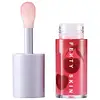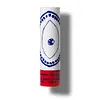What's inside
What's inside
 Key Ingredients
Key Ingredients

No key ingredients
 Benefits
Benefits

 Concerns
Concerns

 Ingredients Side-by-side
Ingredients Side-by-side

Polyglyceryl-2 Triisostearate
EmulsifyingPolyglyceryl-2 Isostearate/Dimer Dilinoleate Copolymer
EmollientDiphenyl Dimethicone
EmollientSilica Dimethyl Silylate
EmollientPrunus Avium Seed Oil
EmollientSimmondsia Chinensis Seed Oil
EmollientDextrin Palmitate
EmulsifyingRosa Canina Fruit Oil
EmollientMalpighia Glabra Fruit Extract
Skin ConditioningPrunus Serotina Fruit Extract
MaskingRaphanus Sativus Root Extract
AstringentMaltodextrin
AbsorbentCitric Acid
BufferingWater
Skin ConditioningBenzyl Alcohol
PerfumingBenzyl Benzoate
AntimicrobialDehydroacetic Acid
PreservativeButylene Glycol
Humectant1,2-Hexanediol
Skin ConditioningAroma
Polyglyceryl-2 Triisostearate, Polyglyceryl-2 Isostearate/Dimer Dilinoleate Copolymer, Diphenyl Dimethicone, Silica Dimethyl Silylate, Prunus Avium Seed Oil, Simmondsia Chinensis Seed Oil, Dextrin Palmitate, Rosa Canina Fruit Oil, Malpighia Glabra Fruit Extract, Prunus Serotina Fruit Extract, Raphanus Sativus Root Extract, Maltodextrin, Citric Acid, Water, Benzyl Alcohol, Benzyl Benzoate, Dehydroacetic Acid, Butylene Glycol, 1,2-Hexanediol, Aroma
Hydrogenated Vegetable Oil
EmollientRicinus Communis Seed Oil
MaskingHelianthus Annuus Seed Cera
EmollientButyrospermum Parkii Butter
Skin ConditioningTheobroma Cacao Seed Butter
EmollientAroma
Dicalcium Phosphate
AbrasiveTocopherol
AntioxidantMacadamia Ternifolia Seed Oil
EmollientHelianthus Annuus Seed Oil
EmollientHypericum Perforatum Oil
EmollientCitric Acid
BufferingCI 15850
Cosmetic ColorantCI 19140
Cosmetic ColorantCI 42090
Cosmetic ColorantCI 77492
Cosmetic ColorantCI 77891
Cosmetic ColorantHydrogenated Vegetable Oil, Ricinus Communis Seed Oil, Helianthus Annuus Seed Cera, Butyrospermum Parkii Butter, Theobroma Cacao Seed Butter, Aroma, Dicalcium Phosphate, Tocopherol, Macadamia Ternifolia Seed Oil, Helianthus Annuus Seed Oil, Hypericum Perforatum Oil, Citric Acid, CI 15850, CI 19140, CI 42090, CI 77492, CI 77891
 Reviews
Reviews

Ingredients Explained
These ingredients are found in both products.
Ingredients higher up in an ingredient list are typically present in a larger amount.
Aroma refers to an ingredient, or mixture of ingredients, that impart or mask a flavor.
The name is slightly confusing. This is because INCI associates aroma with flavor instead of smell.
Here is the official definition from the The International Cosmetic Ingredient Dictionary and Handbook:
“Aroma is a term for ingredient labeling used to identify that a product contains a material or combination of materials normally added to a cosmetic to produce or to mask a particular flavor.”
INCI shows the only purpose of aroma to be "flavouring".
However, due to regulation differences, some companies may use aroma in place of parfum.
In Canada, this ingredient only has to be listed in concentrations above 1%.
Learn more about AromaCitric Acid is an alpha hydroxy acid (AHA) naturally found in citrus fruits like oranges, lemons, and limes.
Like other AHAs, citric acid can exfoliate skin by breaking down the bonds that hold dead skin cells together. This helps reveal smoother and brighter skin underneath.
However, this exfoliating effect only happens at high concentrations (20%) which can be hard to find in cosmetic products.
Due to this, citric acid is usually included in small amounts as a pH adjuster. This helps keep products slightly more acidic and compatible with skin's natural pH.
In skincare formulas, citric acid can:
While it can provide some skin benefits, research shows lactic acid and glycolic acid are generally more effective and less irritating exfoliants.
Most citric acid used in skincare today is made by fermenting sugars (usually from molasses). This synthetic version is identical to the natural citrus form but easier to stabilize and use in formulations.
Read more about some other popular AHA's here:
Learn more about Citric Acid